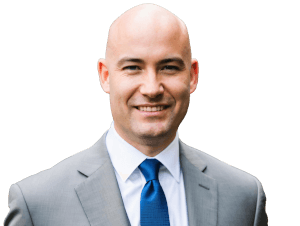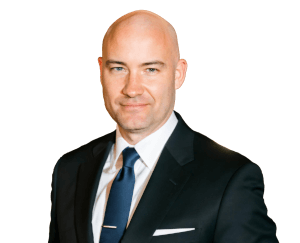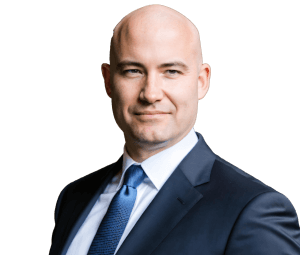
Families often worry when they see skin changes in a loved one living in a nursing home. If you’re wondering what stages of bedsores are legally considered neglect or abuse, the answer depends on the severity of the sore, the response from caregivers, and the resident’s overall health condition.
An Atlanta bedsores lawyer often speaks with people who feel uncertain about whether a wound points to neglect or something that could happen despite attentive care. The truth lies in how the sore developed and how the staff handled it once it appeared.
Understanding the stages of bedsores helps families know when poor care may have contributed and when legal action might be appropriate.
How an Atlanta Nursing Home Abuse Lawyer Views Bedsores
Bedsores, or pressure ulcers, progress in stages. Some appear as small red marks that heal with prompt treatment, while others advance into severe wounds that expose tissue, muscle, or bone.
An Atlanta nursing home abuse lawyer looks beyond the wound itself. The focus centers on whether staff moved residents often enough, checked their skin for changes, and followed through on medical care when problems began.
When those responsibilities lapse, the stages of the sore reveal both the severity of the injury and whether a facility’s neglect contributed to the harm.
Stage One: Early Redness
Stage one often begins with redness that does not fade after gentle pressure. The skin may feel warm, firm, or tender.
In many cases, careful caregivers notice these changes quickly and adjust a resident’s position, provide cushioning, or apply protective dressings. This attention helps stop the sore from progressing further.
When staff fail to act at this stage, a seemingly minor spot can signal the beginning of neglect. Proper response at stage one often determines whether a wound heals or worsens.
Stage Two: Open Sores
Stage two involves a shallow open wound or blister. The skin has already broken down, exposing the resident to greater pain and risk of infection.
Facilities with attentive staff often treat stage two sores with regular cleaning, protective coverings, and repositioning schedules. Families may notice dressings applied and documented care plans in place.
An Atlanta bedsores attorney may question whether caregivers acted quickly once the sore appeared. If staff ignored the injury or failed to provide treatment, stage two can reflect neglect.

Stage Three: Tissue Damage
By stage three, the wound extends into tissue beneath the skin layers. The injury may resemble a crater, showing that proper preventive steps were not taken earlier by caregivers.
Residents in this stage require specialized wound care and often need urgent input from outside medical providers. Facilities must create a clear plan for treatment and carefully track healing progress each day.
When no such plan exists or when staff fail to follow through consistently, the evidence points directly to neglect. Families often discover at this point that their loved one has suffered avoidable, painful harm.

Stage Four: Severe Wounds
Stage four represents the most serious form of bedsore. The wound may reach muscle or bone, causing extreme pain and raising the risk of life-threatening infection.
At this stage, family members often learn that preventive care did not occur. Regular repositioning, nutritional support, and medical oversight should have been in place long before the wound reached this level.
An Atlanta bedsores attorney investigating a stage four wound may view it as strong evidence of abuse or neglect. These sores rarely develop without repeated failures in care.
Unstageable Wounds and Infected Ulcers
Some bedsores fall into an “unstageable” category when dead tissue or drainage covers the injury. These wounds often hide even greater damage beneath the surface.
Infected ulcers may spread bacteria into the bloodstream, leading to sepsis or other life-threatening conditions. Families sometimes first learn of the severity when their loved one is hospitalized.
Unstageable and infected wounds often point toward prolonged neglect. The lack of earlier intervention allowed the sore to worsen until it reached a dangerous and painful state.
Medical Conditions That Increase Risk
Certain health issues make residents more prone to painful bedsores. Diabetes, vascular disease, and poor nutrition all limit the body’s natural ability to heal properly.
Residents recovering from surgery or living with reduced mobility also face a far greater risk. In these situations, staff must take consistent extra steps to prevent sores from forming at all.
When a facility fails to provide those extra precautions, even a medically vulnerable resident may have grounds for a neglect claim. The presence of risk factors does not excuse a lack of care.
Legal Perspective on Bedsore Stages in Georgia
From a legal standpoint, not every bedsore equates to neglect. The defining factor lies in how the sore developed and whether caregivers acted quickly to prevent further damage. Stage one and stage two sores can often heal with proper care. When facilities intervene immediately, these injuries may not rise to the level of legal neglect.
Stage three, stage four, unstageable, and infected wounds more often signal failures in care. An Atlanta bedsores attorney may use these cases to show that the resident suffered harm that could have been avoided.
What Families in Atlanta Should Do
Families who notice redness, blisters, or open sores should act right away. Document the injury with photos, request wound care records, and ask staff about the treatment plan.
If answers are vague or no plan exists, consider seeking an outside medical opinion. Independent doctors can confirm the stage of the sore and recommend proper treatment. By taking these steps, families protect their loved one’s health and create a clear record of the care provided in the facility.
Taking Legal Action with an Atlanta Bedsores Attorney
When evidence shows neglect, families may pursue legal action against the facility. Possible claims include medical expenses for wound care, pain and suffering, and costs related to relocation.
An Atlanta bedsores attorney may rely on photos, medical charts, and testimony from wound care experts to prove how the sore developed. Each piece of evidence builds the case that caregivers failed to provide proper attention.
Legal action not only provides accountability but also helps prevent future harm by holding facilities responsible for poor practices that are legally considered neglect or abuse.
How Schenk Nursing Home Abuse Law Supports Families
If you wonder how the stages of bedsores that are legally considered neglect or abuse apply to your loved one’s situation, you deserve guidance that feels personal. The condition of a sore can reveal the quality of care and whether action may be needed.
Our Atlanta bedsores lawyer can explain what the stages mean, what records matter most, and how families can respond when they suspect neglect. At Schenk Nursing Home Abuse Law, Rob Schenk answers the phone himself and takes the time to listen.
Even when a case cannot move forward, he provides resources so families leave the conversation with more direction. Call today and learn what steps may bring your family peace of mind.



